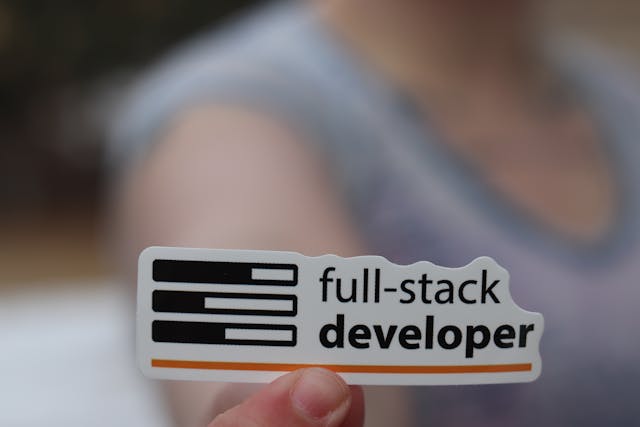Highlights
Upgrade your career with top notch training
- Instructor-led training
- Includes hands-on exercises
- Conducted in both in-person and online modes
- Access course content on any device via LMS
- Flexible schedule
- Job assistance – Resume prep, Mockup interviews
Outcomes
By the end of this course, participants will be equipped with:
- MS Office Fundamentals: Gain proficiency in essential MS Office applications, including Word, Excel, and PowerPoint, for effective document creation, data management, and presentation.
- Develop and Manage WordPress Sites: Learn to install, configure, and customize WordPress websites, including theme management and plugin integration.
- Create and Style Web Pages: Acquire skills in HTML and CSS to build and style responsive web pages, ensuring proper structure and design.
- Implement Interactive Features: Use JavaScript to add interactivity and dynamic content to websites, enhancing user experience with client-side scripting.
- Build and Maintain Databases: Understand database fundamentals and basic operations for managing web applications.
About
In simple terms it is the process of developing and maintaining a website. It can range from simple static pages to complex dynamic and interactive websites or applications. It requires the designing, building and maintaining the website. These tasks are done by Web developers, who are trained in web development skills.
The main role/responsibility of a web developer is to
- Design the architecture and layout, which is the user interface and navigation menus
- Write code such as HTML, CSS, JavaScript, or PHP
- Test web applications
- Troubleshoot problems with performance or user experience
- Work in collaboration with designers and managers
There are basically two types of web developers, viz. Front-end developer and Back-end developer.
Back-end web developer: Back-end web developers are responsible for providing code for server-side systems and services, which, when combined with front-end technologies, create a good end user experience. Professionals in back-end web development specialize in server-side scripting languages.
Front-end web developer: Front-end developers are coders who focus on the website’s structural layout. They give importance to visual design and digital aesthetics of the web application.
Full-stack developer: A full-stack web developer is an expert in both back-end and front-end programming. Due to their knowledge of both technologies, full-stack engineers are the highest-paid experts in the web development business.
Web development involves a range of skills and technologies essential for creating and maintaining websites. The basics include MS Office fundamentals for documentation and project management. For building websites, you’ll need to know HTML and CSS for structure and styling, JavaScript for interactivity, and PHP for server-side scripting. WordPress is a popular content management system that simplifies website creation, while understanding databases is crucial for managing and retrieving data efficiently. Mastery of these elements enables you to develop functional, dynamic, and user-friendly websites.
This course provides a comprehensive introduction to essential digital skills and technologies. You’ll begin with MS Office fundamentals to master tools like Word, Excel, and PowerPoint. Explore website creation with WordPress and learn web design using HTML, CSS, and JavaScript. Gain programming knowledge with PHP and understand the basics of databases to manage and interact with data effectively. This training is ideal for beginners seeking a well-rounded foundation in these key areas of digital technology.
Key Learnings in WEB DEVELOPMENT
- MS Office Fundamentals
- Website Development with WordPress
- HTML & CSS Basics
- JavaScript Essentials
- PHP Programming
- Database Management
Pre-requisites
- No prior computer knowledge is required
- Minimum high-school diploma.
Job roles and career paths
This training will equip you for the following job roles and career paths:
- Web Developer
- Front-End Developer
- Back-End Developer
- Full-Stack Developer
- Database Administrator
WEB DEVELOPMENT
The demand for web development skills remains strong due to the continuous growth of online businesses and digital platforms. Proficiency in technologies such as HTML, CSS, JavaScript, PHP, and WordPress is highly sought after for creating, maintaining, and optimizing websites. Knowledge of databases is also crucial for managing data-driven applications. As companies increasingly invest in their online presence, skilled web developers are essential for building effective, engaging, and high-performance websites. This demand spans various industries, including technology, e-commerce, media, and education.
Topics of Course
-
Overview of Web Development
-
Understanding Frontend vs. Backend
-
Web Development Tools and Environment Setup
-
Introduction to Web Technologies (HTML, CSS, JavaScript)
-
Structure of HTML Documents
-
Elements and Tags
-
Attributes and Semantic HTML
-
Best Practices for HTML
-
Introduction to CSS: Syntax and Selectors
-
Box Model and Layout Techniques (Flexbox, Grid)
-
Responsive Design Principles
-
CSS Frameworks Overview (Introduction to Bootstrap)
-
JavaScript Basics: Syntax, Variables, Data Types
-
Functions, Scope, and Loops
-
DOM Manipulation
-
Event Handling
-
Introduction to ES6 Features (let, const, arrow functions, etc.)
-
Setting Up Bootstrap
-
Bootstrap Grid System
-
Predefined Components (Navigation, Modals, Forms)
-
Customizing Bootstrap Components
-
Planning and Designing a Static Website
-
Building a Simple Multi-Page Website
-
Best Practices for Static Websites (SEO, Accessibility)
-
Deploying Static Websites (GitHub Pages, Netlify)
-
Introduction to Angular Framework
-
Setting Up Angular Environment
-
Understanding Components and Modules
-
Data Binding and Directives
-
Routing in Angular Applications
-
Creating a Simple Angular Application
-
Introduction to Node.js and NPM
-
Setting Up Express Server
-
RESTful API Design
-
Middleware in Express
-
Handling Asynchronous Operations
-
Creating a Simple API with Node.js
-
Introduction to Databases (SQL vs. NoSQL)
-
Basics of SQL (Queries, CRUD Operations)
-
Using a Relational Database Management System (MySQL/PostgreSQL)
-
Connecting Node.js with a Database
-
Introduction to Cloud Computing (IaaS, PaaS, SaaS)
-
Overview of Cloud Providers (AWS, Azure, Google Cloud)
-
Deploying Applications to the Cloud
-
Basics of Cloud Storage and Database Services
-
Project Planning: Defining Requirements and Objectives
-
Designing the Architecture (Frontend and Backend Integration)
-
Implementing the Frontend with Angular
-
Building the Backend with Node.js and Express
-
Database Integration and Management
-
Deploying the Complete Application (Frontend and Backend)
-
Final Project Presentation and Feedback


 Free
Free
 Free
Free
 Free
Free

